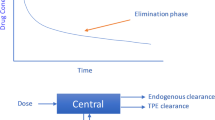Summary
Hemoglobin solutions and fluorocarbon emulsions are evaluated as artificial oxygen carriers. The efficacy of hemoglobin solutions with respect to O2 transport and especially the effective O2 release to tissues has been demonstrated in a number of situations, such as extreme hemodilution and hemorrhagic shock. The hemoglobin molecule could be stabilized by genetic and chemical modifications. This results in a clinically utilizable intravascular half-life of about 8–24 h, an adequate O2 affinity, and a lack of nephrotoxicity. A degree of vasoconstriction must be mentioned as the persistent side effect of the hemoglobin solutions evaluated here. In spite of this, hemoglobin solutions are also well tolerated in humans. Fluorocarbon emulsions are compounds with a very high gas solubility and are, therefore, well suited for the transport of O2 and CO2. The capacity for the release of O2 to the tissues is especially excellent. This was demonstrated under extreme hemodilution, during extracorporeal circulation and also under reanimation. Perflubron, the most important representative of the fluorocarbon emulsions, has also been successfully used in man and is well tolerated. The introduction of artificial oxygen carriers to clinical practice will greatly change transfusion medicine and also the acute care of trauma patients. Launch is expected within the next few years.
Zusammenfassung
Hämoglobinlösungen und Fluorocarbonemulsionen werden als künstliche Sauerstoffträger evaluiert. Die Wirksamkeit von Hämoglobinlösungen bezüglich O2-Transport und insbesondere der effektiven O2-Abgabe ans Gewebe ist belegt in einer Vielzahl von Situationen wie der extremen Hämodilution und dem hämorrhagischen Schock. Durch genetische und chemische Modifikationen läßt sich das Hämoglobinmolekül stabilisieren. Daraus resultiert eine klinisch brauchbare intravaskuläre Halbwertszeit von ca. 8–24 h, eine adäquate O2-Affinität und eine fehlende Nephrotoxizität. Als verbleibende Nebenwirkung der heute evaluierten Hämoglobinlösungen muß eine gewisse Vasokonstriktion erwähnt werden. Trotzdem sind Hämoglobinlösungen auch bei Menschen gut verträglich. Fluorocarbonemulsionen sind Verbindungen mit einer sehr hohen Gaslöslichkeit und sind damit für den Transport von O2 und CO2 gut geeignet. Insbesondere die O2-Abgabekapazität an das Gewebe ist exzellent. Dies wurde unter extremer Hämodilution, während extrakorporaler Zirkulation und auch unter Reanimation nachgewiesen. Perflubron, der wichtigste Vertreter aus der Gruppe der Fluorocarbonemulsionen, ist auch beim Menschen erfolgreich eingesetzt worden und ist gut verträglich. Die Einführung der künstlichen Sauerstoffträger in die klinische Praxis wird die Transfusionsmedizin und auch die Akutversorgung von Verletzten deutlich verändern. Mit einer Einführung ist in den nächsten Jahren zu rechnen.
Similar content being viewed by others
Author information
Authors and Affiliations
Additional information
Eingegangen: 2. Juni 1998 Akzeptiert: 2. September 1998
Rights and permissions
About this article
Cite this article
Spahn, D., Jamnicki, M. Künstliche Sauerstoffträger. Intensivmed 36, 243–249 (1999). https://doi.org/10.1007/s003900050235
Issue Date:
DOI: https://doi.org/10.1007/s003900050235




